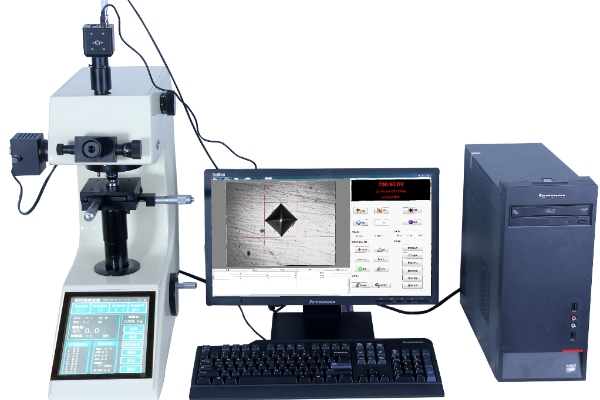Vickers Hardness is a commonly used index of the mechanical properties of materials to assess their hardness. It is easy and quick to measure and is widely used in engineering. In this paper, we will discuss the definition and measurement of Vickers Hardness and its importance in materials science.
Definition and measurement of Vickers hardness
Vickers hardness was first proposed by British engineer George E. Vickers in 1921. It measures the hardness of a material by applying a specific pressure on the surface of the material. The Vickers hardness value is derived by calculating the ratio between the diagonal length of the imprint and the pressure applied.
Vickers hardness is measured by using an instrument called a Vickers hardness tester. By applying a certain amount of pressure to the surface of the material, the hardness tester creates a tiny indentation in the surface of the material. The two diagonal lengths of the indentation are then measured and the Vickers hardness value is calculated.

Importance of Vickers Hardness
Vickers hardness is of great importance in materials science. The following are a few aspects of importance:
1. Material characterization
Vickers hardness can be used to characterize the difference in hardness of different materials. By comparing the Vickers hardness values of different materials, we can assess the wear resistance, deformation resistance, and shear resistance of the material. This is an important guide for material selection and design.
2. Evaluation of material properties
Vickers hardness can be used to assess the mechanical properties of materials. For example, in metallic materials, the Vickers hardness value can be correlated with the tensile and yield strength of the material. By measuring Vickers hardness, we can assess the strength and toughness of the material and make appropriate material selection.
3. Quality control
Vickers hardness is widely used in the field of quality control. In the manufacturing industry, the quality and reliability of a product can be assessed by measuring its Vickers hardness value. This is important to ensure product consistency and compliance with specifications.
4. Materials research
Vickers hardness also plays an important role in materials research. By measuring the Vickers hardness of materials after different treatments or modifications, it is possible to assess the effect of these treatments or modifications on material properties. This provides valuable experimental data to materials engineers and helps them optimize the properties of materials.
Conclusion
Vickers hardness is a very useful indicator of the mechanical properties of materials, which can be assessed by simple and rapid measurement methods. It has a wide range of applications in materials science and engineering. By measuring the Vickers hardness value, we can characterize the materials, performance evaluation, quality control and materials research. Therefore, Vickers hardness plays an indispensable role in the field of materials.